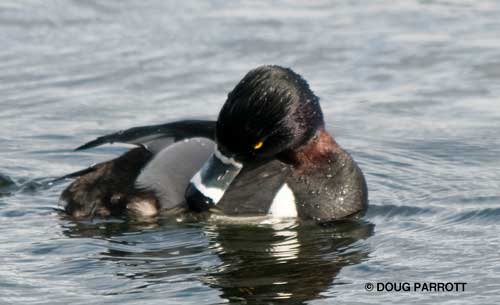I freely admit that we birders are nutty about our passion. We keep extensive lists of all the birds we see, sometimes listing by county, continent, even our own backyards. When we’re out birding (which is anytime we are allowed out), we rudely interrupt conversations if we see a good bird. Many of us drop everything to chase a rare bird whenever one happens to appear. I once stood beside a birder from Indiana who was trying to find a very rare thrush in Olympia. As we stood under a dripping pine tree, thrush-less and wet, he mentioned he had left his daughter’s wedding to look for this bird.
In all fairness, though, perhaps part of our looniness might very well be caused by the authorities who determine what name a bird shall bear. These are guys who work for the American Ornithologist’s Union, and I have to ask at times, “What were you thinking??!!”
There are many examples of names that make no sense: Long-billed Dowitchers and Short-billed Dowitchers have bills more or less the same length. Sandhill Cranes prefer wetlands and rarely if ever come near sandy hills, whatever those are (dunes, perhaps?). Tennessee Warblers neither live nor nest in Tennessee. Bald Eagles aren’t bald, and any guy with as full a head of white hair as a Bald Eagle has white feathers would be offended if told his pate even looked bald.
But perhaps the most egregious case of misnomerness in all of bird-dom is the name given to one of our very own scaups, a diving duck with feet set far back on its body to help it swim underwater. In winter, we see fairly large flocks of this spiffy-looking duck, each male decked out in black, gray, and white feathers; and each female discrete yet elegant in brown. This duck has a dramatic white ring around the tip of its bill. Males have an additional white ring around the base of the bill. And yet, this duck’s name is Ring-NECKED Duck. Naturally, the Washington duck that does have a ring around its neck is called a Mallard.
So it was that after years of tripping over my own tongue whenever I talk about this duck (“I saw a Ring-billed… er, Ring-necked Duck today”), I was highly gratified the other day to find a male example swimming in the Lagoon in perfect, strong sunlight. He began preening the feathers of his flank, and as he did, he twisted his head, revealing…a dark brown ring around his neck. Hey, hey.

